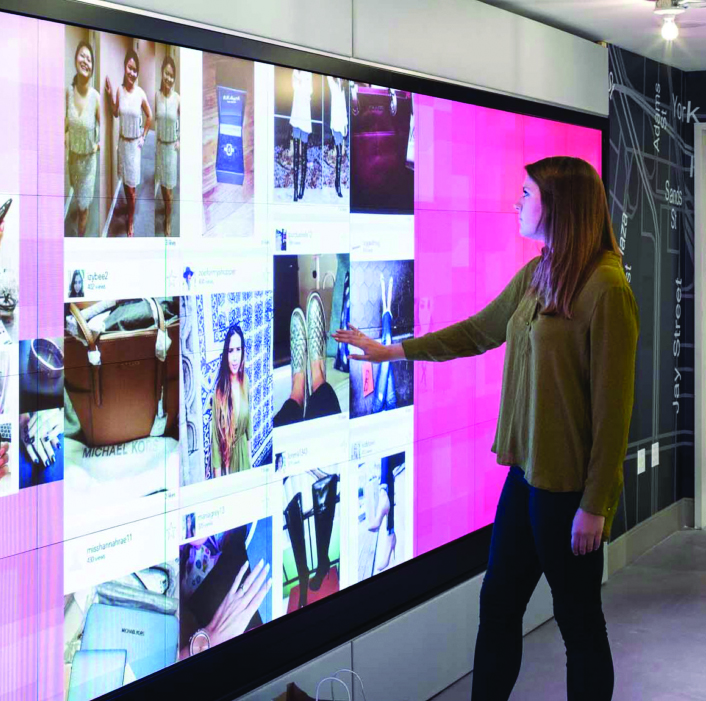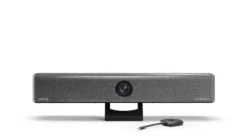
Ten years ago, while judging a class project at Northwestern University, a fellow judge from Proctor & Gamble said said something I have repeated more times than I can count: “We fund well what we measure well.”
Every media since the dawn of technology has gone through a cycle similar to what we’ve experienced in digital signage: it emerges and it’s cool and novel, then it becomes prolific— but it’s hard to track, sell and measure in a streamlined way. Then, when a common planning, buying and measurement platform happens, it takes off like a rocket. This is all about one word—accountability.
A dear friend of mine is CEO of one of the largest media firms in the world, and for years he’s declared a belief that all marketing will ultimately be rooted in digital. Even printed signs will be, as passing viewers will not know that big data was crunched to determine where the sign should be, who is likely to see it, what the best headline and image will be to catch their eye and interest, and what creative template to use. As our phones get closer to becoming physical cookies—and trust me, we’re not far off—the advertiser will also be able to track the nitty gritty of the audience and who cared enough to take action on the ad. What looks like a typical sign will be powered by digital. It just won’t be obvious.
Digital signage had enjoyed great acceptance and popularity, but from the perspective of accountability, we’ve struggled a bit. However, we’re making great progress—our screens are getting smarter, and we are too.
INTEGRATED ECOSYSTEMS
For over a decade, those of us that run pilots and programs have had a tough time finding ways to stitch together the hardware, software and data that we need to test, evolve and tweak our network strategies. They worked functionally, but we were under the gun to prove what was working regarding key performance indicators (KPIs). Even harder was to confidently say why.
A brand wants all marketing vehicles to have proof of presence, proof of audience, proof of view and proof of response. Therefore, we’ve had to assimilate a hodgepodge of stuff to determine audience, gaze, sentiment, emotion and transactional effect—if we could even get it. Then build APIs, models and excel/dashboard templates to try to make sense of it all without a PHD. Only then could we report on what we did, what was working/not working and what to do about it—a term marketing folks refer to as ‘optimization’. When you can optimize, you can stop talking about the marketing vehicle (the TV, the internet, the mobile phone, the digital sign, etc.) and start talking about your campaigns—reach, audience, frequency and impact. Marketers can say with confidence, “We know that vehicle is a worthy investment, we’re just figuring out how to make it work best for us—and this is what we know so far.”
Cue Q4 of this year. NEC, with the announcement of the ALP offering, got us one step further towards integrated ecosystems. Their appliance knits together audience info, gaze, a CMS and a savvy business intelligence dashboard. Offerings like this validate the concept of retail analytics while also serving up targeted content—auto-assimilating the ideal message to the person standing in front of the screen based on who they appear to be. This kind if scenario is on the critical wish list for any brand or media buyer, as any message is an ad until it has personal meaning—then it’s thoughtful suggestion. Big difference.
Other interesting platforms have also appeared that go at personalization from an overtly permission-based perspective. Facenote is an opt-in facial identification technology that helps companies recognize their most valuable customers. They tempt them to take a selfie with a really nice incentive (think $20 off), thus giving them the okay to market to them individually as they please. They receive special rewards and deals when in the store, the benefits clear—more personal lures, more brand engagement and realtime, targeted loyalty exchanges. It also makes it easy for store associates to tap into purchasing behavior, style preferences and more, all meaning conversion. Early enrollment numbers are coming in around 7.8 percent, and conversion rate at 36 percent–meaning out of 100 selfies, 36 convert over to a sale. These are number most brands would kill for.
StoreDNA is another notable shout-out. A business-intelligence platform, it connects computer vision with existing store camera data feeds to provide real-time, actionable in-store insights. They focus squarely on helping retailers make better analytics-based decisions on productivity, store layouts, merchandising assortments, and staffing, and while not a specific digital signage play, the bigger opportunity for us to integrate these kinds of data feeds with the ‘smart signs’ we’re discussing here. When that happens, we will be seeing what we’ve been calling the ‘Holy Grail’ for over a decade—the same level of tracking we have online inside the brick-and-mortar world. Corporate can track, analyze and recommend actions to improve store operations. Store teams can track traffic, bounce rate (come in and leave), interactivity with fixtures, displays, interaction with products at SKU level and more. They can see how many times a shoe has been picked up, how many people abandoned the checkout line, where they dwelled and areas they avoided, etc. They can know—irrefutably—what message, offers and creative approaches pull both attention and transactions. Like Dopplar Radar meets responsive content, it all comes together so that can content respond accordingly.
While these companies are not the only ones worth mentioning, they are representative of the intelligence coming into our industry—intelligence that will not only legitimize our signs as the potent marketing vehicles that they are, but will make it easier for brands to invest in them and figure out how to make them work harder. Like P&G said, marketers fund well what they measure well. It’s ying and yang.
DEFINING METRICS
I read with interest a recent initiative by NPR based on the core belief that “what we decide to measure defines who we are and what we do.” The article stated that in any media today, someone in charge must declare what the goal is and what metric will be used to track progress. Once stated, everybody then pivots toward that metric. People change, the work changes, the output changes. The challenge, they present, is what measurements should be chosen to drive our progress in digital service where the platforms keep changing and proliferating?
Tom Hjelm, NPR’s chief digital officer, decided to offer up the framework already being deployed internally: GROW—KNOW—ENGAGE—MONETIZE.
We must grow audiences across platforms so that we increase our reach in our markets, distribute our content more widely and expand loyal audiences. We must know our audiences so that we can form and deepen individual relationships and encourage membership. We must engage with our audiences so we encourage affinity, loyalty, membership and advocacy. And we must monetize our audiences so we that we drive membership and other forms of revenue. As an industry, aligning to this can only spell success—and it all starts with accountable measurement systems. As we grow in sophistication, so will our legitimacy, reach and investment value.
What we measure will indeed define who we are and what we do; answering the question with the detail on how is going to propel us into a new frontier as a media. How very exciting.
Laura Davis-Taylor, HighStreet Collective co-founder, has been focused on creating meaningful retail experiences that bridge home, life and store for over 20 years, both as a consultant and within the walls of many lauded global agencies.










